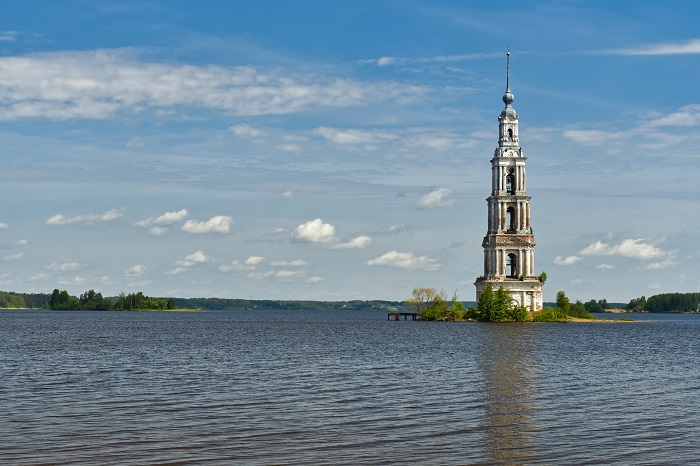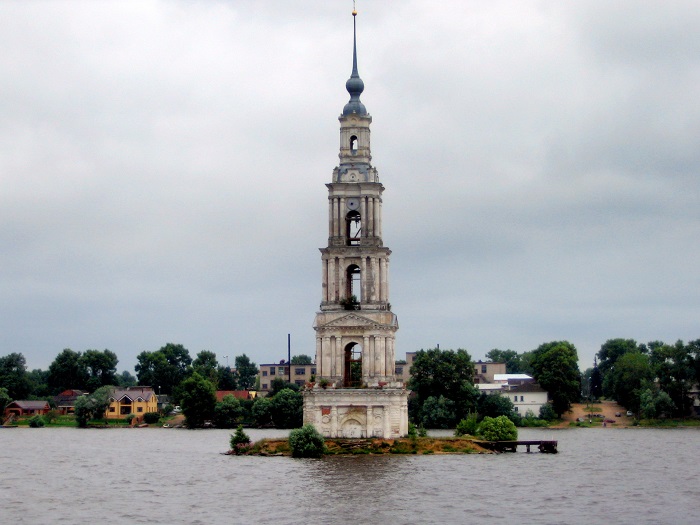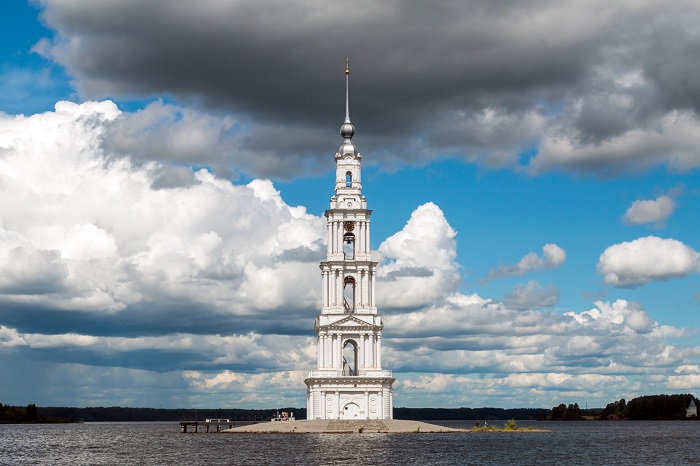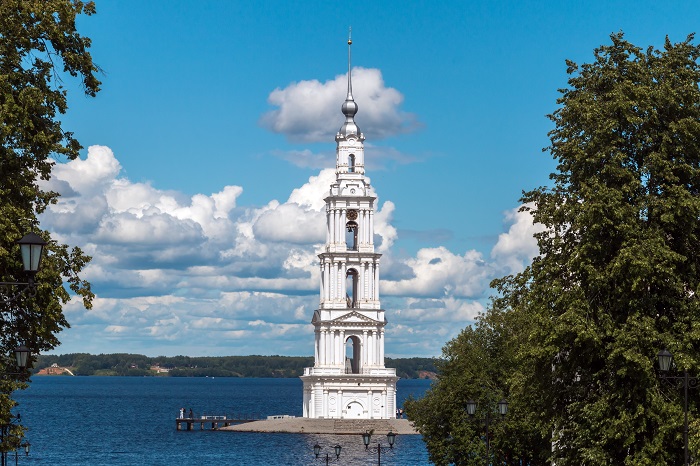The Kalyazin Bell Tower, also known as the Flooded Bellfry, is a Neoclassical campanile or as the English equivalent would be a bell tower that rises to a height of 74.5 m (244 ft) over the waters of the Uglich Reservoir on the Volga River opposite the old town of Kalyazin, in the eastern part of the Tver Oblast, within the northwestern part of the Russian Federation.
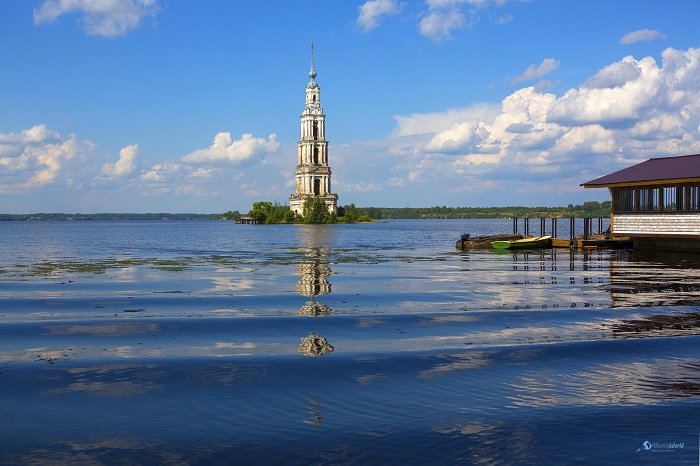
Originally constructed between 1796 and 1800, the steepled belfry was an integral component of the now-vanished Monastery of St. Nicholas, and adjacent to it was built a pentacupolar katholikon dating back to 1694, housing an ensemble of 12 bells, with the largest among them weighing an astonishing 17,000 kg.
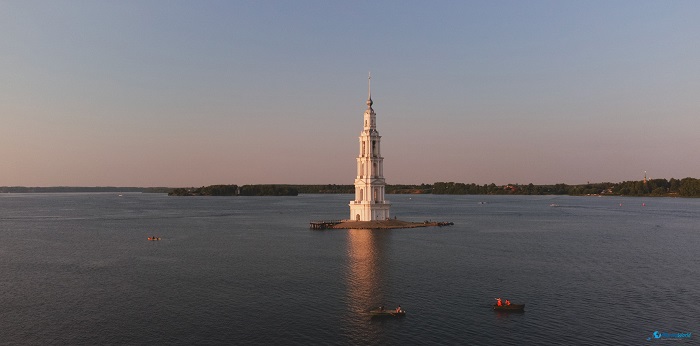
In contemporary times, a significant number of individuals embark on journeys along the Volga River in Russia, and upon reaching the quaint town of Kalyazin, a perplexing sight emerges amidst the expanse of an artificial lake. Commissioned in 1895 to commemorate the coronation of Nicholas II of Russia, the bell tower’s history intersects with the 1940s when the Communist government, under Joseph Stalin’s directive, undertook ambitious plans to render the turbulent river navigable throughout the year.
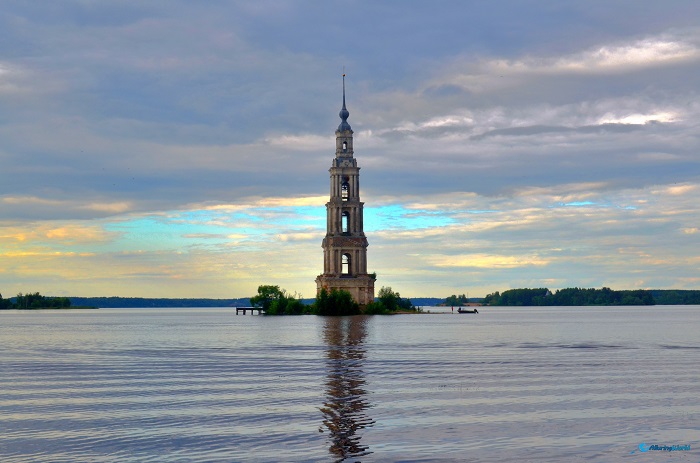
This endeavor led to the construction of the Uglich Dam in 1939, along with a cascade of dams and reservoirs along the Upper Volga. This initiative not only provided the region with a vital transport artery but also harnessed hydroelectric power as an added benefit. However, this transformation also concealed centuries of history, leaving behind the Makaryevsky Monastery’s bell tower as the sole tangible vestige above the waters of the Uglich Reservoir.
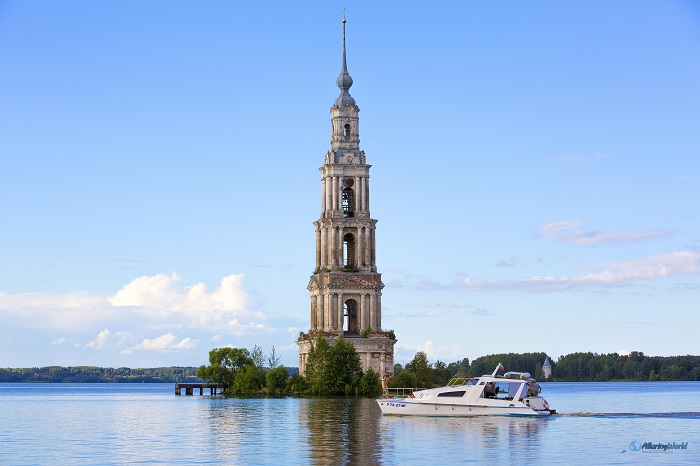
While the katholikon was disassembled, the campanile endured, standing as a towering landmark above the water’s surface, and although this act of preservation might be viewed as historical desecration today, it’s challenging to refute this perspective, given the substantial upheavals experienced by the USSR during the 1940s.
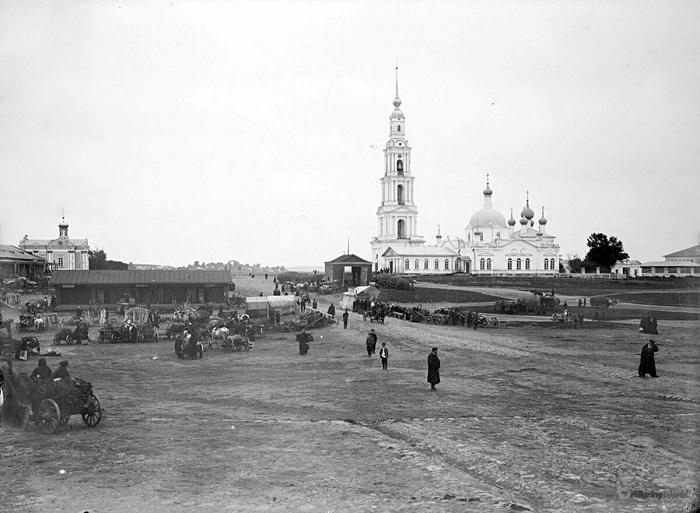
As the paramount focus was on modernization and the enhancement of infrastructure for a nation ravaged by war, in this context, historical preservation sometimes yielded to pragmatic priorities. The early inundation of the area left no opportunity to dismantle the cathedral before the waters encroached.
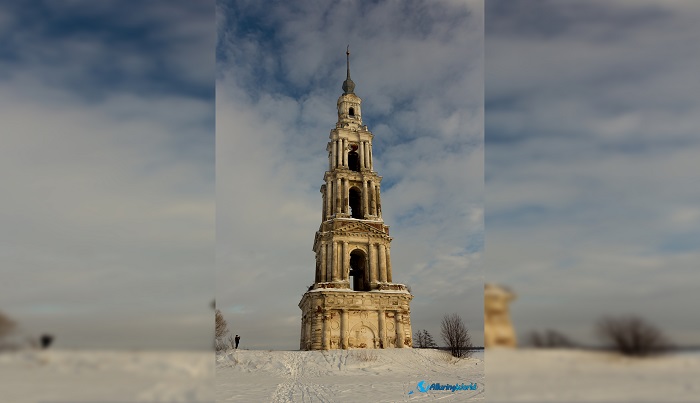
As a navigational aid due to the sharp bend the waters make at this juncture, the decision was made to retain the tower. However, the specter of flooding remained a perpetual concern. Consequently, a man-made island was created around the belfry’s first floor, elevating it above the water’s surface. Standing resolutely in the heart of the Volga, it often stands solitary, occasionally hosting a few visitors during the summer months.


